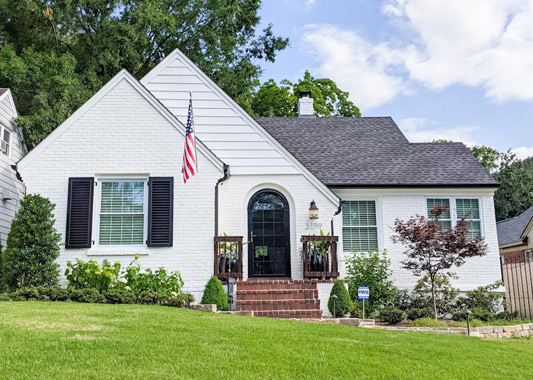It must be a trend when the non-profits make a commitment to “go green” or maybe they understand that saving money for energy usage shouldn’t just be for people who can retrofit their houses. Either way, this isn’t the first Habitat Chapter to commit to building better houses. We applaud their efforts. This article originally in GreenBuilder.
In addition to energy-efficient building, Habitat adds fire sprinklers for occupant safety
When Habitat for Humanity St. Louis (HFHSL) identified available property just north of downtown, the construction team wanted to build homes that were not only energy efficient but safe for its new tenants.
The nonprofit agency was able to accomplish both by using sustainable materials and installing eco-friendly products, such as tankless water heaters, geothermal exchange heating and cooling systems, structural insulated panels, cool roofs, low-VOC paints, and copper fire sprinkler systems.
With model building codes now requiring new single- and two-family dwellings to be outfitted with sprinkler systems, Habitat chose to go with copper systems for all of its new homes, including the six that are still left to be completed in early spring 2011. Copper is durable, recyclable, and contains recycled content. Copper systems also offer economic advantages, including lower maintenance costs and long-term performance.
The 17 single-family homes already built, and families moved in, are 1,200 square feet, and consist of three- and four-bedrooms, and one and a half baths. They were designed to complement the current architecture in the neighborhood, and all of the homes are pending LEED Platinum certification.
“We’re really proud of these homes,” says Kyle Hunsberger, the director of construction for Habitat for Humanity–St. Louis. “They’re really well built for the population we serve.”
A majority of the materials, services and labor were donated by local companies and contractors. The electrical union IBEW Local 1 installed the electrical service and the members of Sprinkler Fitters Local 268 in St. Louis donated and installed the copper material for the sprinkler systems.
“Of the two materials approved for this type of construction, one is copper the other is steel,” says Stan Shiner, president of Fire Protection Systems, the company that installed the sprinkler systems. “We elected to go with copper because it’s easier to work with. You can cut and fit copper on the job. You can do this with steel pipe too, but you’re threading it—and the accuracy of steel pipe is harder to achieve when hitting walls above.”
While some plastic materials are approved for use in residential fire sprinkler systems, they can’t be used in exposed locations such as in basements, crawlspaces, attics, and garages without being protected behind a fire-rated barrier, an additional construction cost. Since copper doesn’t burn, doesn’t support combustion, and doesn’t emit potentially toxic fumes when subjected to fire, it is the safe, smart choice. In addition to being lightweight, durable and able to withstand extreme temperatures, it also offers a slimmer profile, which is easier to conceal within the building and install. And, discharge water from copper systems is typically free of rust or sediment.
“It’s a proven system,” says Hunsberger, referring to the copper. “When installed properly, it’s going to perform for the life of the project.”
Once this set of homes is complete, Habitat will continue to build in the JeffVanderLou neighborhood, along with two other neighborhoods, in 2011.



 Photo Credit: Caldwell House, TN
Photo Credit: Caldwell House, TN